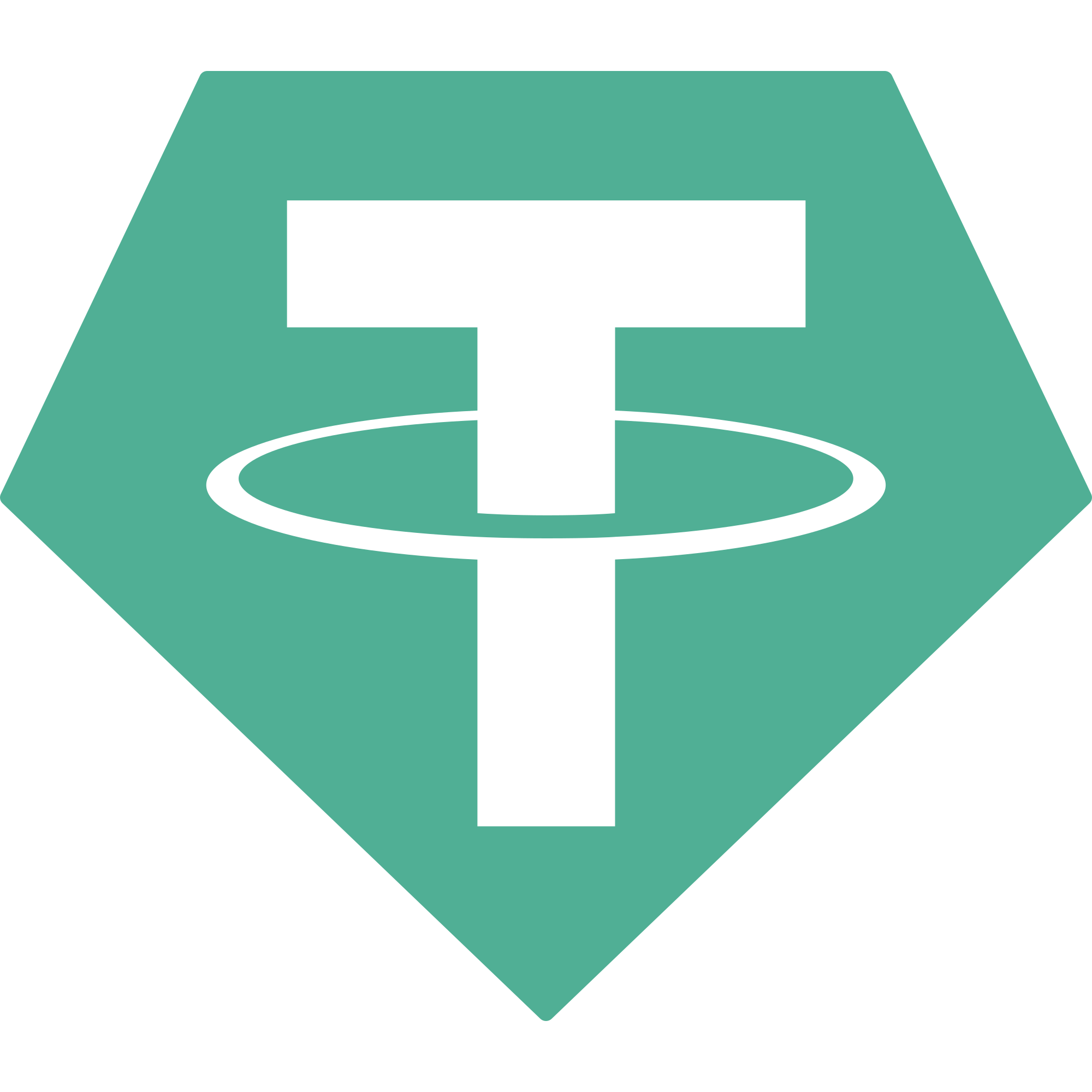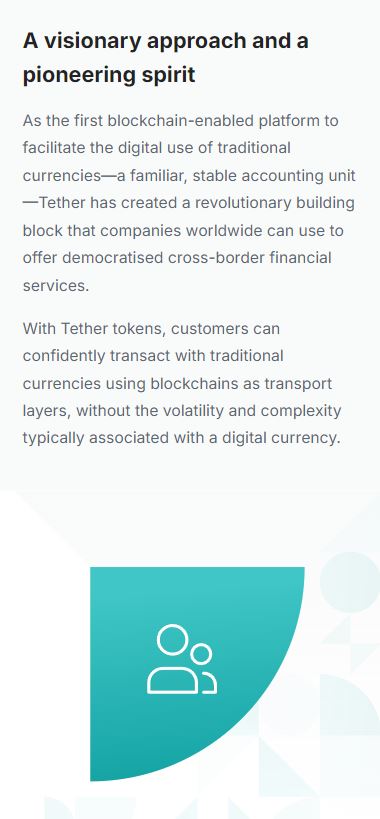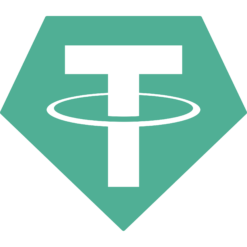About Tether (USDT)
Tether (USDT) is the most popular stablecoin in the cryptocurrency ecosystem, widely used for trading, remittances, and as a store of value during volatile market conditions. It was first introduced in 2014 under the name Realcoin and later rebranded to Tether. The coin is designed to maintain a 1:1 peg with the US Dollar, providing a stable value compared to other highly volatile cryptocurrencies like Bitcoin or Ethereum.
Tether aims to provide cryptocurrency users with a stable digital currency that can be easily redeemed for U.S. dollars, making it a practical tool for traders who wish to avoid the fluctuations inherent in other cryptocurrencies while still participating in the crypto market.

Historical Timeline of Tether (USDT)
- July 2014: Tether was announced as Realcoin by Brock Pierce, Reeve Collins, and Craig Sellars.
- October 6, 2014: The first Tether tokens (USDT) were issued on the Bitcoin blockchain via the Omni Layer protocol.
- November 20, 2014: The project was renamed from Realcoin to Tether.
- January 2015: Tether (USDT) trading was enabled on Bitfinex, with other exchanges following suit.
- January 2018: Tether tokens were supported on the Ethereum blockchain (ERC-20 standard).
- November 27, 2018: Direct customer fiat redemption (non-exchange) was introduced.
- March 4, 2019: Tether (USDT) began to be supported on the TRON blockchain (TRC-20 standard).
- May 31, 2019: Tether was also supported on EOS.
- July 29, 2019: Tether tokens started being supported on the Liquid Network, a sidechain for Bitcoin.
How Tether (USDT) Works
Tether tokens are designed to be a 1:1 representation of the US Dollar. For every USDT token in circulation, Tether Ltd. (the company behind USDT) holds an equivalent amount of USD reserves. This backing helps ensure that USDT remains stable and can be redeemed at any time for the equivalent value in fiat currency (USD).
Tether works by minting new tokens when it receives deposits into its reserves, and burning tokens when the reserves are reduced (due to withdrawals or redemptions). This process ensures that the supply of USDT is aligned with the reserves held by Tether Ltd., allowing the coin to maintain its dollar peg.
- Minting and Burning: When a user deposits USD into Tether’s reserves, the company issues an equivalent amount of USDT tokens. If a user redeems USDT for USD, those tokens are destroyed (burned), reducing the total supply of USDT.
Key Features of Tether (USDT)
- 1:1 Fiat Backing: Each USDT token is redeemable for 1 USD, meaning the value of USDT is directly tied to the value of the US Dollar.
- Cross-Blockchain Availability: Tether is issued across multiple blockchains, including Bitcoin (Omni Layer), Ethereum (ERC-20), TRON (TRC-20), EOS, and others, allowing for broad interoperability within the crypto space.
- Stable Store of Value: USDT helps users and traders avoid the high volatility of cryptocurrencies like Bitcoin and Ethereum, offering a safe haven for their funds in times of market uncertainty.
- Frictionless Transactions: USDT allows for quick and low-cost transfers between exchanges and wallets, without the need for converting back into fiat through traditional banking systems, saving time and fees.
- Redemption and Transparency: Tether aims to maintain transparency by providing regular attestations from third-party accountants, who verify the fiat reserves held in Tether’s accounts. These reports help users ensure that Tether is fully backed by fiat reserves and remains transparent in its operations.
Utility and Use Cases of Tether (USDT)
Tether serves multiple important functions within the cryptocurrency market, including:
- Stable Store of Value: In an environment where cryptocurrencies are highly volatile, USDT offers traders and investors a way to preserve value while staying within the crypto ecosystem. It is commonly used by traders to park profits temporarily without needing to exit into traditional fiat currency, thus avoiding delays and fees associated with the banking system.
- Trading Pair: USDT is widely used as a trading pair on crypto exchanges. Traders often use USDT to enter or exit positions in volatile crypto markets, providing a way to maintain liquidity and stability.
- Cross-Border Payments: Due to its stable value, Tether is also used for cross-border remittances and international payments, providing a low-cost and fast alternative to traditional remittance methods.
- DeFi Applications: USDT is a key asset in the DeFi (Decentralized Finance) ecosystem, where it is used for lending, borrowing, staking, and as collateral in decentralized exchanges (DEXs). Its stability makes it an ideal medium of exchange and store of value within the DeFi sector.
- Blockchain Integration: Tether’s compatibility with multiple blockchains (Omni, Ethereum, TRON, EOS, and others) allows it to be used in a wide variety of decentralized applications (DApps) across different platforms.
Transparency and Controversies
Tether has faced criticism over the years for a lack of full transparency regarding its reserves and whether it fully maintains the 1:1 backing for USDT. However, the company has worked to address these concerns by providing regular attestations and reports from third-party firms to confirm that the fiat reserves are indeed backed 1:1.
Some concerns about Tether’s market influence have also emerged, especially regarding the potential for manipulation in the crypto markets. Since Tether is widely used and holds significant market capitalization, its supply expansion and contraction could influence market movements.
Despite these controversies, Tether remains one of the most widely used and trusted stablecoins within the cryptocurrency ecosystem due to its liquidity, stability, and widespread integration across exchanges and platforms.
Conclusion
Tether (USDT) is a cornerstone of the cryptocurrency ecosystem, providing a stable digital asset that serves as a safe haven for traders and users alike. With its 1:1 US Dollar backing, ease of use across multiple blockchains, and seamless integration into the broader crypto market, USDT plays a crucial role in facilitating fast, low-cost transactions and bridging the gap between traditional fiat and digital currencies.
While transparency and regulatory concerns have sometimes surrounded Tether, it continues to be a popular and essential tool in the cryptocurrency space.




















SOLOMON TAMATEY –
Base coin ! this coin is use full !